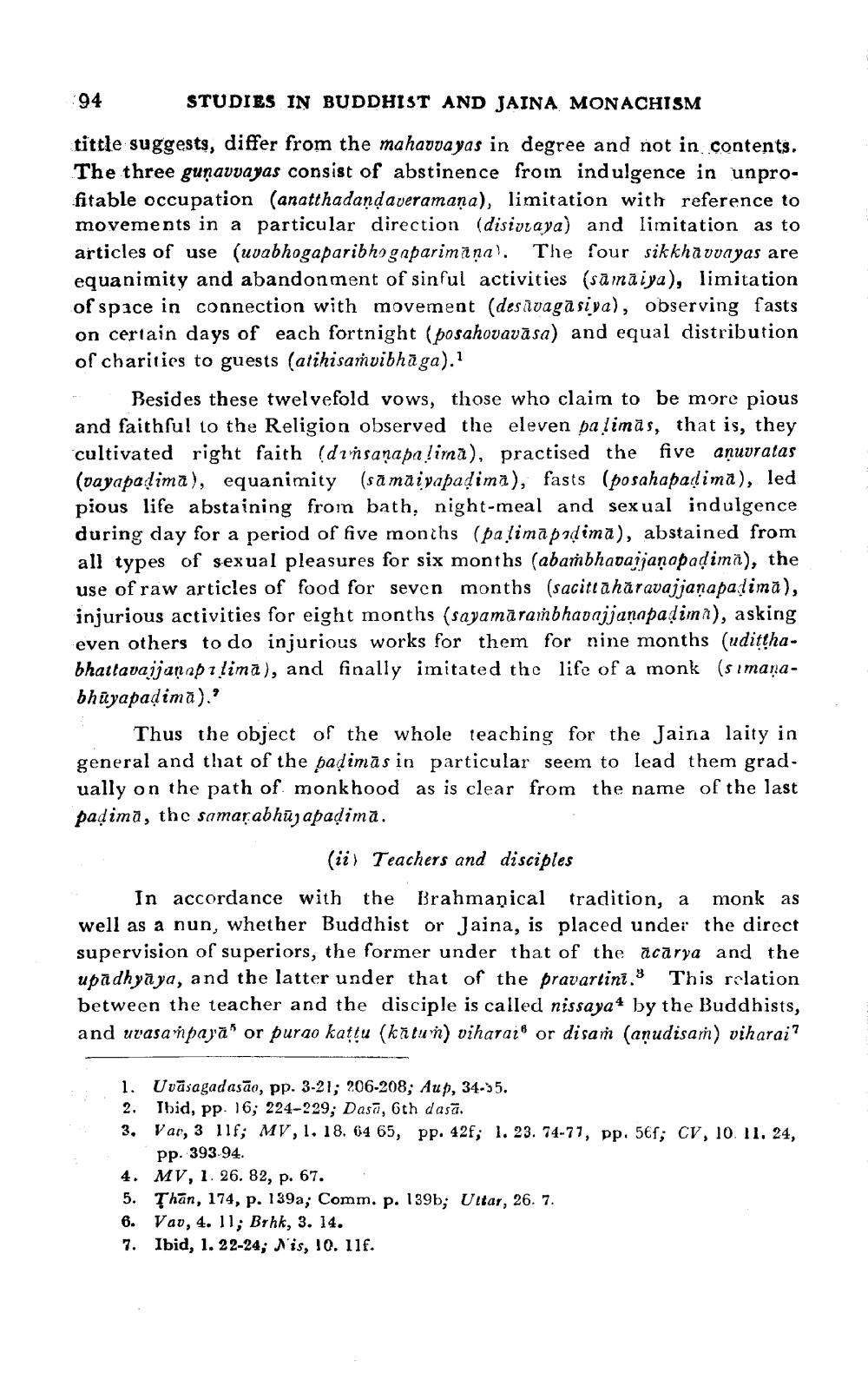________________
94 STUDIES IN BUDDHIST AND JAINA MONACHISM tittle suggests, differ from the mahavvayas in degree and not in contents. The three gunavvayas consist of abstinence from indulgence in unprofitable occupation (anatthadand averamana), limitation with reference to movements in a particular direction (disiplaya) and limitation as to articles of use (uvabhogaparibhogapariminal. The four sikkhavvayas are equanimity and abandonment of sinful activities (sāmāiya), limitation of space in connection with movement (desivaga siya), observing fasts on certain days of each fortnight (posahovavāsa) and equal distribution of charities to guests (atihisaṁvibhāga).
Besides these twelvefold vows, those who claim to be more pious and faithful to the Religion observed the eleven pa limàs, that is, they cultivated right faith (dzinsanapa lima), practised the five anuvratas (vayapadima), equanimity (sāmaiyapadima), fasts (posahapadima), led pious life abstaining from bath, night-meal and sexual indulgence during day for a period of five months (palimapadima), abstained from all types of sexual pleasures for six months (abambhavaijanapadima), the use of raw articles of food for seven months (sacitiahāravajjanapadima), injurious activities for eight months (sayamārambhavajjanapadima), asking even others to do injurious works for them for nine months (udittha. bhattavaijan api lima), and finally imitated the life of a monk (simanabhūyapadima).'
Thus the object of the whole teaching for the Jaina laity in general and that of the padimās in particular seem to lead them grad. ually on the path of monkhood as is clear from the name of the last padima, the samarabhūyapadima.
(ii) Teachers and disciples In accordance with the Brahmaņical tradition, a monk as well as a nun, whether Buddhist or Jaina, is placed under the direct supervision of superiors, the former under that of the acārya and the upadhyā ya, and the latter under that of the pravartini. This relation between the teacher and the disciple is called nissaya4 by the Buddhists, and uvasanpaya' or purao kattu (katum) viharai® or disan (anudisam) viharai?
1. Uvāsagadasão, pp. 3-21; 206-208; Aup, 34-35. 2. Ibid, pp. 16; 224-229; Dasa, 6th dasa. 3. Var, 3 11f; MV,1. 18. 64 65, pp. 42f; 1. 23. 74-77, pp. 56; CV, 10.11. 24,
Pp. 393-94. 4. MV, 1. 26. 82, p. 67. 5. Thān, 174, p. 139a; Comm. p. 139b; Ultar, 26. 7. 6. Vav, 4. 11; Brhk, 3. 14. 7. Ibid, 1.22-24; Nis, 10. 11f.




